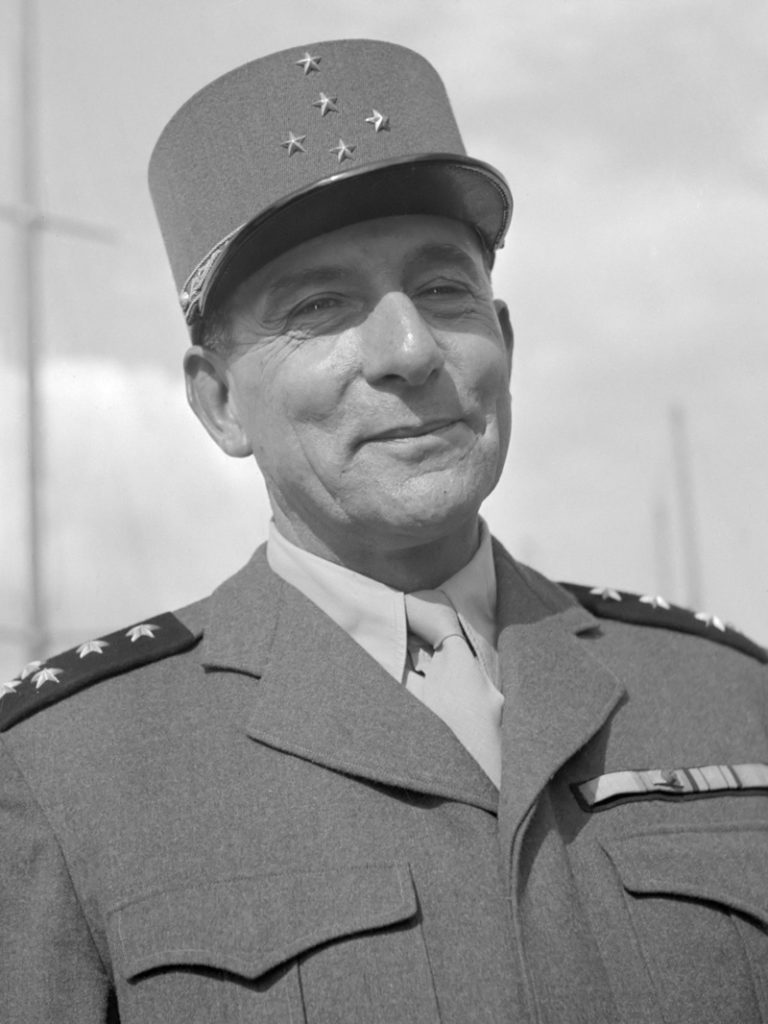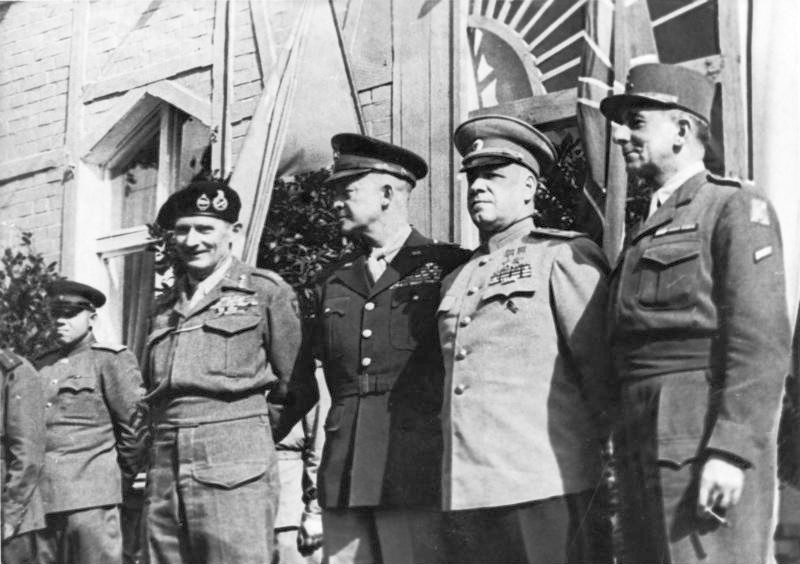Jean de Lattre de Tassigny commanded the French ‘Army B’, later the 1st Army, which took part in the liberation of France as the largest French formation. On May 8th 1945 he represented France during the signing of the unconditional surrender of Nazi Germany in Berlin-Karlshorst.
Jean de Lattre de Tassigny fought with distinction during First World War, earning the highest decorations. As the youngest general in the French Army he led a division during the fall of France in 1940, and later served on various military posts. In November 1942, during the German occupation of the ‘Free Zone’ of France, he refused to follow Vichy orders not to resist and was consequently imprisoned. At the end of 1943 he escaped and joined with the Free French forces as one of the senior commanders.
In August 1944 de Lattre de Tassigny commanded the ‘Army B’, the French component of operation Dragoon. His troops liberated Marseille and, along with American 7th Army, chased the Germans up to Lorraine. During the winter 1944/1945 he commanded the 1st French Army in the fighting in Lorraine and the liquidation of the Colmar Pocket. In the final Allied offensive on Germany, de Lattre’s troops advanced to the Danube.
General de Lattre de Tassigny was present as the French representative during the unconditional surrender of Nazi Germany in Berlin-Karlshorst. Before the ceremony he successfully pressed the Allies to include France as the separate power accepting the surrender of Germany.
Later he commanded French troops in Indochina. De Lattre died of cancer in 1952, and was posthumously promoted to the rank of Marshal of France.


